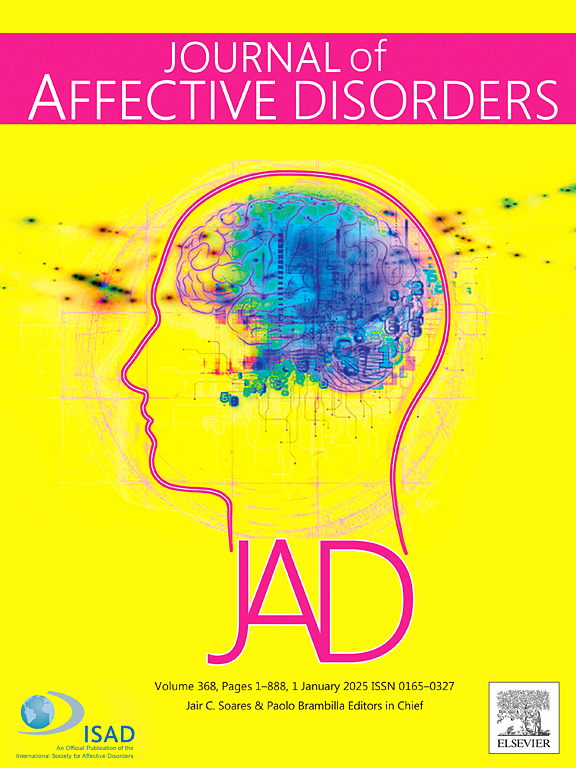Functional brain network dynamics of brooding in depression: Insights from real-time fMRI neurofeedback
IF 4.9
2区 医学
Q1 CLINICAL NEUROLOGY
引用次数: 0
Abstract
Background
Brooding is a critical symptom and prognostic factor of major depressive disorder (MDD), which involves passively dwelling on self-referential dysphoria and related abstractions. The neurobiology of brooding remains under characterized. We aimed to elucidate neural dynamics underlying brooding, and explore their responses to neurofeedback intervention in MDD.
Methods
We investigated functional MRI (fMRI) dynamic functional network connectivity (dFNC) in 36 MDD subjects and 26 healthy controls (HCs) during rest and brooding. Rest was measured before and after fMRI neurofeedback (MDD-active/sham: n = 18/18, HC-active/sham: n = 13/13). Baseline brooding severity was recorded using Ruminative Response Scale - Brooding subscale (RRS-B).
Results
Four recurrent dFNC states were identified. Measures of time spent were not significantly different between MDD and HC for any of these states during brooding or rest. RRS-B scores in MDD showed significant negative correlation with measures of time spent in dFNC state 3 during brooding (r = −0.4, p = 0.002, FDR-significant). This state comprises strong connections spanning several brain systems involved in sensory, attentional and cognitive processing. Time spent in this anti-brooding dFNC state significantly increased following neurofeedback only in the MDD active group (z = −2.09, FWE-p = 0.034).
Limitations
The sample size was small and imbalanced between groups. Brooding condition was not examined post-neurofeedback.
Conclusion
We identified a densely connected anti-brooding dFNC brain state in MDD. MDD subjects spent significantly longer time in this state after active neurofeedback intervention, highlighting neurofeedback's potential for modulating dysfunctional brain dynamics to treat MDD.
求助全文
约1分钟内获得全文
求助全文
来源期刊

Journal of affective disorders
医学-精神病学
CiteScore
10.90
自引率
6.10%
发文量
1319
审稿时长
9.3 weeks
期刊介绍:
The Journal of Affective Disorders publishes papers concerned with affective disorders in the widest sense: depression, mania, mood spectrum, emotions and personality, anxiety and stress. It is interdisciplinary and aims to bring together different approaches for a diverse readership. Top quality papers will be accepted dealing with any aspect of affective disorders, including neuroimaging, cognitive neurosciences, genetics, molecular biology, experimental and clinical neurosciences, pharmacology, neuroimmunoendocrinology, intervention and treatment trials.
 求助内容:
求助内容: 应助结果提醒方式:
应助结果提醒方式:


